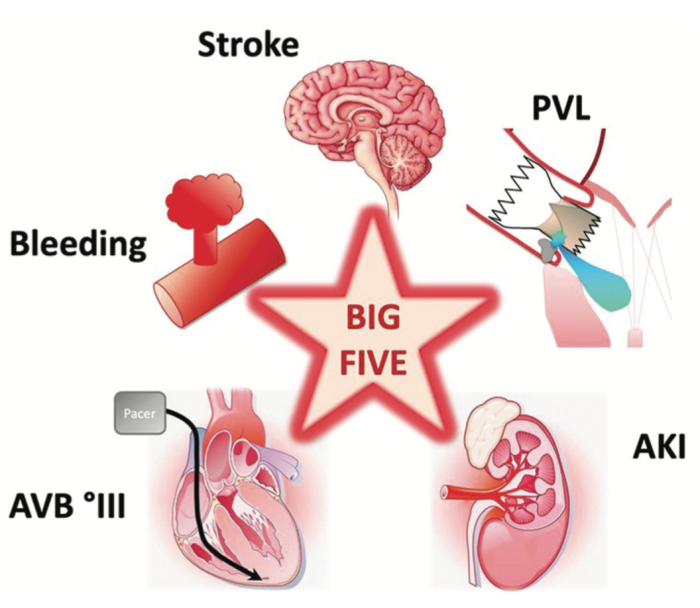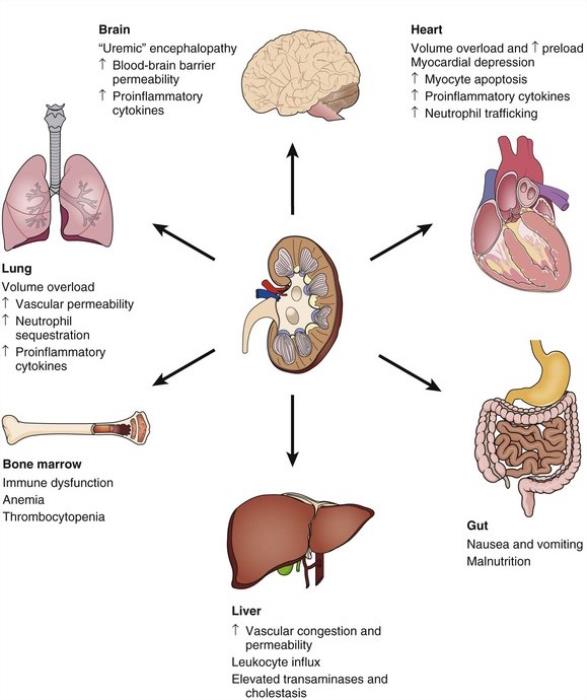Transcatheter Aortic Valve Replacement (TAVR) has become a transformative option for treating severe aortic stenosis, offering a less invasive alternative to open-heart surgery. While TAVR is generally considered safer for high-risk patients, it does carry certain risks and complications that should be carefully evaluated. Understanding these risks helps patients and healthcare providers make informed decisions, balancing the benefits of improved heart function with the potential challenges in recovery.
Medical disclaimer: This content is for general awareness and does not replace a doctor’s consultation. For diagnosis or treatment decisions, consult a qualified specialist.
What Is TAVR? A Look at This Minimally Invasive Valve Procedure
TAVR involves placing a new valve within the diseased aortic valve via a catheter, usually inserted through a small incision in the groin or chest. Unlike open-heart surgery, TAVR doesn’t require a large chest incision or cardiopulmonary bypass, making it a suitable option for patients who are not ideal candidates for traditional surgery. However, despite its minimally invasive nature, TAVR is still a major procedure with inherent risks, especially for those with pre-existing health conditions.
Common Risks and Complications Linked to TAVR Surgery
Complications from TAVR surgery can range from minor to more serious. Some of the most common risks include vascular complications, bleeding, and arrhythmias, which may require a pacemaker. These risks are influenced by factors like the patient’s age, overall health, and the complexity of their heart condition. Monitoring and managing these complications are essential to optimizing recovery and long-term health following the procedure.

Stroke Risk During and After the TAVR Procedure
One significant risk associated with TAVR is stroke, which can occur if plaque or small clots are dislodged during the catheter insertion and valve deployment. Stroke risk is often higher in TAVR patients compared to traditional surgery, particularly in older patients with calcified or hardened arteries. Hospitals use embolic protection devices and other precautions to minimize this risk, but stroke remains a serious consideration in TAVR outcomes.
Potential for Blood Vessel Damage Due to Catheter Insertion
Since TAVR is performed through arteries in the groin or chest, there is a risk of damage to blood vessels during catheter insertion and manipulation. This can lead to bleeding, vessel dissection, or other vascular injuries, particularly in patients with smaller or more fragile arteries. Precise imaging and skilled catheter handling are key to reducing this risk, although vessel damage remains a potential complication.
Risk of Bleeding Complications with TAVR
Bleeding is a common risk in TAVR due to both the nature of the procedure and anticoagulant use. Bleeding can occur at the access site or within the heart and surrounding tissues. To manage this risk, patients are carefully monitored, and appropriate medications are adjusted to balance the need for anticoagulation with the risk of bleeding. Severe bleeding may require additional interventions, including blood transfusions.
Arrhythmias and Irregular Heartbeats Post-TAVR
Arrhythmias, including irregular heartbeats, can develop after TAVR as the heart adapts to the new valve. Some patients may experience heart block, requiring a pacemaker for long-term rhythm management. These complications are typically monitored in the days following surgery, allowing for prompt intervention if irregularities arise. Managing arrhythmias post-TAVR is crucial for a stable recovery and improved heart function.
Valve Leakage: Understanding Paravalvular Leak in TAVR
One of the potential complications after Transcatheter Aortic Valve Replacement (TAVR) is a paravalvular leak, which occurs when blood flows around the newly implanted valve rather than through it. This happens when the valve doesn’t completely seal against the aorta, leading to blood leakage and possibly compromising heart function.
Infection Risks: Endocarditis and Other Post-Procedure Infections
Post-TAVR patients are at risk for infections, with endocarditis—a serious infection of the heart’s inner lining and valves—being of particular concern. Preventive measures, including antibiotics and strict hygiene, are essential to reduce the risk of infection following the procedure.
Blood Clots and the Risk of Thrombosis After TAVR
Blood clots can develop following TAVR, posing a risk of thrombosis or embolism, potentially leading to a stroke. Patients are often prescribed anticoagulant medications to reduce the risk of clot formation, and monitoring is essential to catch any signs early.
Pacemaker Dependency: When TAVR Leads to Pacemaker Implantation
In some cases, TAVR can disrupt the heart’s electrical system, requiring patients to have a pacemaker implanted to maintain regular heartbeats. This is more likely in patients with pre-existing conduction issues.
Kidney Injury: Causes and Risks of Renal Complications in TAVR
Kidney injury, often linked to the use of contrast dye or decreased blood flow during TAVR, is a risk, especially in older patients or those with pre-existing kidney disease. Proper hydration and monitoring kidney function pre- and post-surgery can help minimize this risk.

Heart Attack as a Rare but Serious TAVR Complication
Although rare, a heart attack can occur during or shortly after TAVR due to factors like disrupted blood flow or plaque dislodgement during the procedure. Cardiologists take precautions to lower this risk, but it’s still essential for patients to be aware of the possibility.
Risks Related to Anesthesia and Sedation in TAVR
Anesthesia and sedation are necessary for TAVR, yet they carry risks, particularly for elderly patients. Adverse reactions, breathing issues, and blood pressure fluctuations are possible complications, so close monitoring by anesthesia professionals is critical.
Respiratory Complications and Breathing Issues After TAVR
Respiratory complications can develop post-TAVR, often due to pre-existing lung conditions or anesthesia effects. These issues may require breathing support or oxygen therapy to ensure full recovery.
Managing Aortic Regurgitation Risks in TAVR Patients
In some cases, TAVR can lead to aortic regurgitation, where the blood flows backward into the heart due to an improper valve seal. Regular follow-up imaging helps monitor valve function, and interventions are available to address regurgitation if it becomes significant.
Age-Related Factors and How They Impact TAVR Complications
Older patients undergoing TAVR may face a higher risk of complications due to frailty, comorbidities, and reduced resilience. However, TAVR remains a less invasive option than open-heart surgery for many elderly patients, providing a balance of risks and benefits.
How to Prepare for TAVR Surgery to Minimize Risks
Preparation includes optimizing current health conditions, reviewing medications with a healthcare provider, and following a healthy lifestyle. This proactive approach can help reduce the chances of complications and improve surgical outcomes.
Post-TAVR Recovery: Monitoring for Complications
After TAVR, regular follow-up appointments help monitor heart function, check for complications, and adjust medications. Patients should report any unusual symptoms immediately, as early intervention can prevent more severe issues.
The Role of Medications After TAVR Surgery
Learn about the role of medications after TAVR surgery. This section explains the importance of medications in managing recovery, preventing complications, and supporting heart function after the procedure.
Conclusion: Balancing the Risks and Benefits of TAVR Surgery
While TAVR offers a less invasive alternative for patients who are at high risk for open-heart surgery, understanding and managing the risks is essential. With careful planning, appropriate follow-up, and medical guidance, TAVR can significantly improve quality of life for those with severe aortic stenosis.
Best TAVR Procedure in India
The provides a minimally invasive solution for aortic valve replacement, offering quicker recovery times and improved heart function for patients with aortic stenosis.
Best TAVR Surgery Hospitals in India
The best tavr procedure hospitals in india feature state-of-the-art facilities and expert cardiac teams, ensuring top-quality care for patients undergoing this advanced heart valve procedure.
TAVR Procedure Cost in India
The tavr procedure cost in india is competitively priced, allowing patients access to cutting-edge treatment with transparent and affordable pricing options.
Best TAVR Surgeons in India
The Best TAVR Surgeons in India are highly skilled in transcatheter procedures, delivering precise and patient-centered care for successful valve replacements.
FAQ
What are the most common risks associated with TAVR surgery?
Common risks include paravalvular leak, infection, blood clots, need for a pacemaker, and kidney injury. Proper management and follow-up help reduce these risks.
How does TAVR surgery increase the risk of stroke?
During TAVR, there is a small risk that plaque or debris may dislodge, potentially leading to a stroke. Blood-thinning medications and careful procedural techniques help lower this risk.
Can TAVR lead to the need for a pacemaker?
Yes, TAVR can disrupt the heart’s electrical system, leading to pacemaker implantation in certain cases, especially in patients with pre-existing conduction abnormalities.
What can be done to reduce complications after TAVR?
Following a medication regimen, attending regular check-ups, and reporting any unusual symptoms promptly are critical for reducing complications post-TAVR.
Is TAVR riskier for older patients?
Older patients may face increased risks due to age-related health conditions; however, TAVR is often safer than open-heart surgery for high-risk elderly individuals.